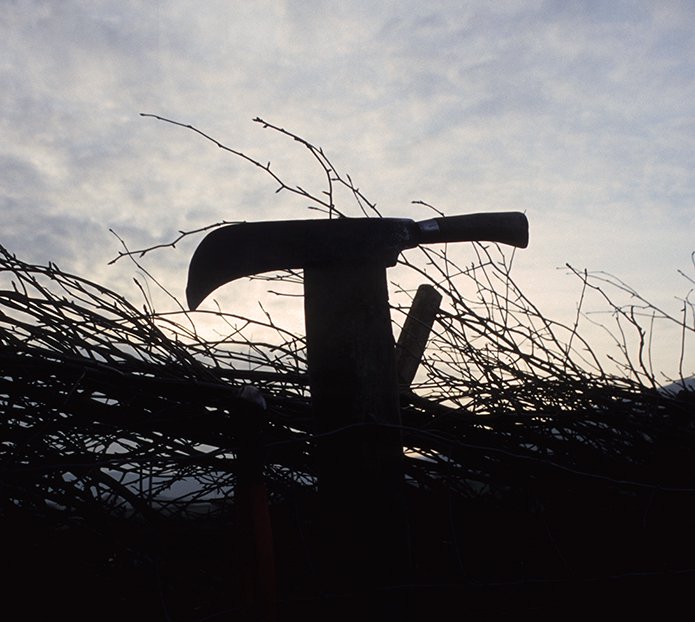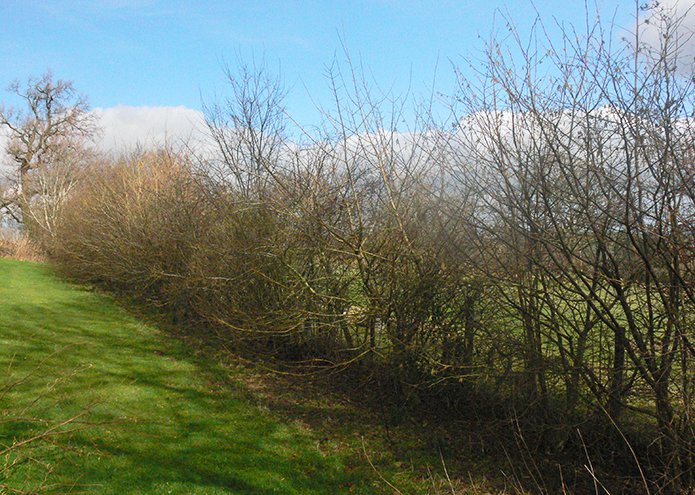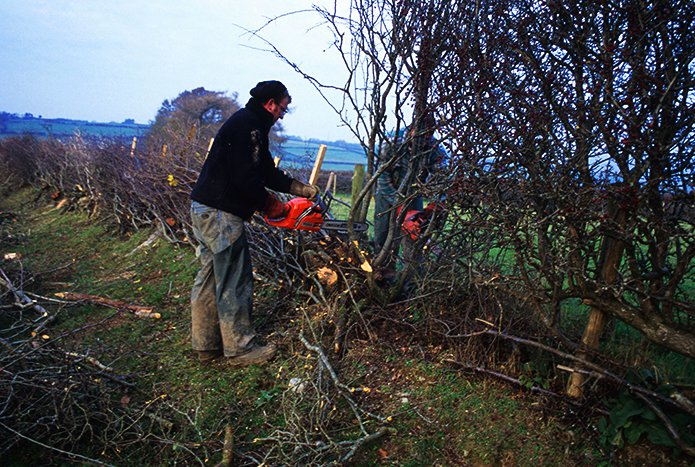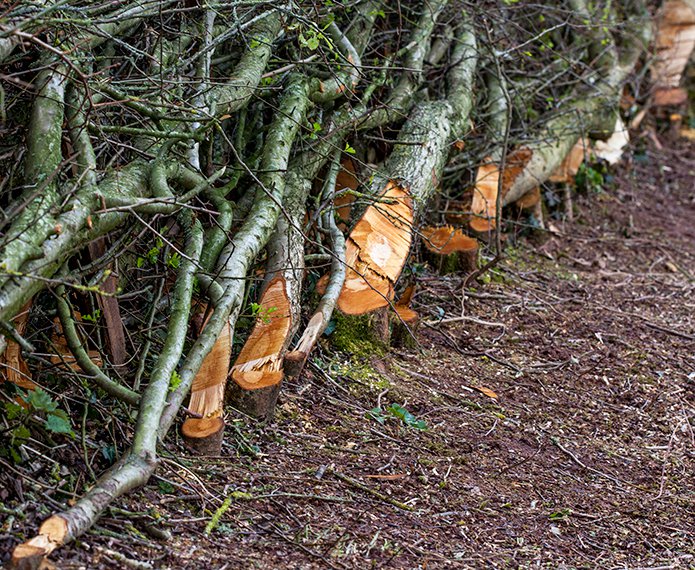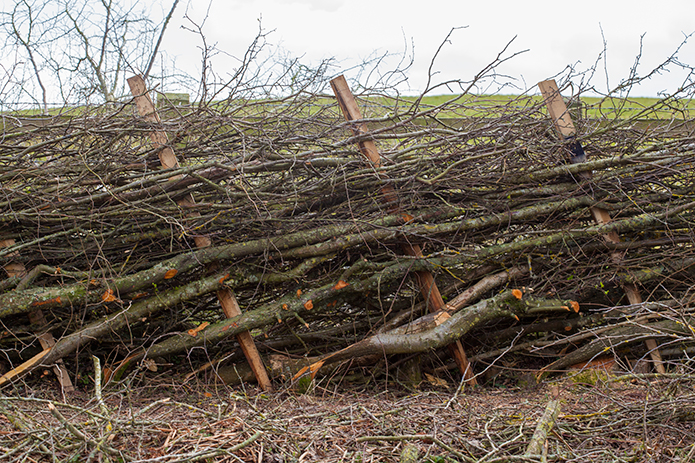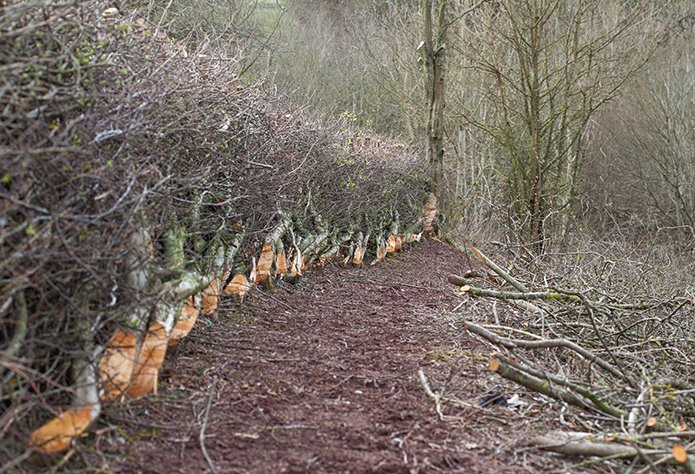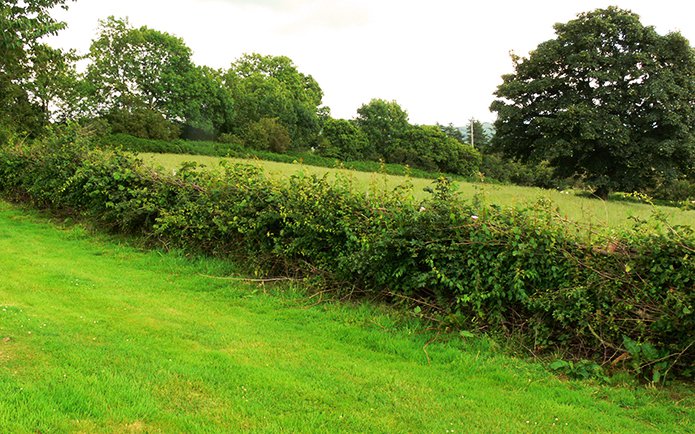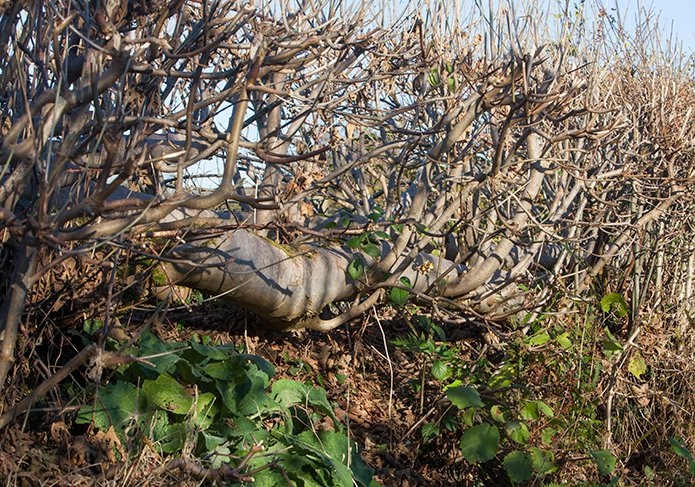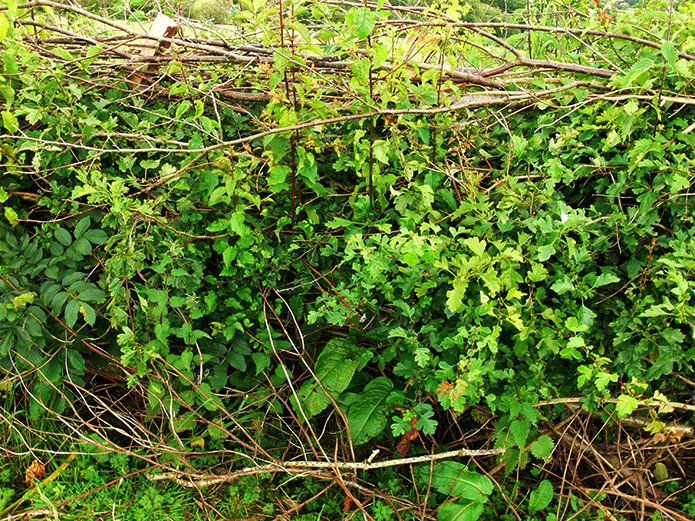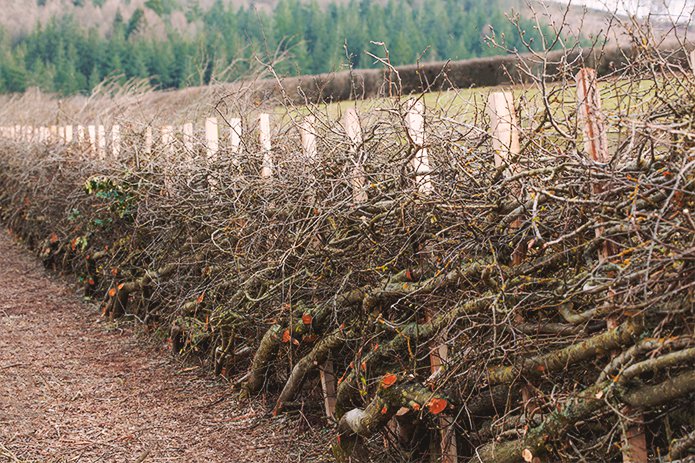
Hedges have been described as quintessentially British frames for the landscape. Look at any picture postcard of a rural idyll and you will see a backdrop of rolling fields divided by a lattice of dense green foliage. And they are much more than an agricultural construct. They are a precious wildlife habitat and represent living archaeology. And just as we cherish, protect and restore our architectural heritage, so our hedges also need regular care and attention.
History
The oldest of these date back three or four millennia. They were literally whittled from the Iron Age woodland that stood on either side. The earliest were probably boundary markers (this was certainly their prime purpose for the Romans and Saxons), but by the late Middle Ages this changed as landowners started to legally seize the ‘wastes’. These might be commons, heaths or even a village’s communal fields.
These ‘Enclosures’ were doubly unpopular because they not only represented the loss of the mediaeval equivalent of allotments, but hedges were now there to contain livestock. This was far less labour-intensive than herding, so it meant job losses. As a result many newly-planted hedges were pulled up by indignant labourers – so many in fact that this became an offence punishable by transportation.
Hedges went into sharp reverse following the Second World War, however. Now it was the landowners who wanted to see the back of them as lowland farming turned from livestock to arable. As tractors grew ever bigger and needed space to manoeuvre, hedges became a costly nuisance to be grubbed out in favour of huge fields.
As a result over the past 75 years Britain has lost four fifths of its hedges and in England alone at least 350,000 km of field boundaries have vanished. Even so you could still encircle the globe more than twice with those that remain. These still need maintenance and neglect has severely reduced the quality and environmental value of many. Left alone a hedge reverts to its woodland roots. As the saplings become trees, they overshadow their smaller neighbours, stifling growth at ground level. Soon the base is full of holes through which livestock can wander and it offers little cover or food for wildlife.
Loving care
Well-maintained hedges are still common in parts of the West Country and Wales. In a nutshell this means careful use of ‘cruel to be kind’ techniques. At its most basic this is a regular brutal haircut with a tractor-mounted flail, but every 20 years or so it must be thinned and re-laid to shock the overgrown trees and suffocating under-storey back into vibrancy.
This ancient skill appears terrifyingly brutal to the uninitiated. In the past a hedger would work mainly with a billhook and a traditional leather mitten to protect the left hand, but today the chainsaw is the tool of choice. Whichever is used, the hedger hacks away to rip out almost all of the old hedge’s living matter. This leaves a straggly row of spindly trees and shrubs.
Those closest to the central line are cut back to waist height to become the ‘croppers’. The rest are slashed most of the way through with a downward cut to a point just above the soil. These ‘pleachers’ are then bent over and threaded between the croppers.
Further strength comes from stakes driven through at an angle. Traditionally these would have come from the thinnings, but today they are usually low-grade softwood from a mill. Finally the tops of the stakes and the croppers are woven together with ‘heatherings’. Once these would have been twelve-foot hazel wands harvested from the thinnings and plaited back and forth between the stake tops to prevent the pleachers springing upright: today most hedgers save time with wire.
The initial result is an apparently lifeless skeleton of fallen poles and hacked-off trunks, but next year young shoots will race for the light from their bark to create a living spiky hurdle. Within months it will form an impenetrable barrier, sheltering stock and wildlife from the elements, while providing food and safety. Viewed objectively, these are forests in miniature: Britain’s landscape version of bonsai. They are also corridors of cover linking our forests and coppices: the wildlife equivalent of a motorway.
Localism
Hedges also reflect the agricultural history of the area. Across the richer land of the South and Midlands they were tall and thin and contained bigger trees which were often pollarded for fodder (the biggest perry orchard in Warwickshire is still effectively a series of hedges). But across Wales the aim was to contain and shelter sheep, so most remain low, thick and thorny. Along coasts, however, salt-burn stunts growth so many Devon and Cornish boundaries are just low prickly shrubs planted along earth-topped walls.
As one might expect, the plants in a hedge reflect its geography, but they also give pointers to its age. Coastal hedges are often based around gorse and briars, while hawthorn predominates inland – and in Cumbria it was usual to plant one apple tree for every four or five thorns to produce a crop from otherwise unproductive ground.
Age
It is more complicated than this however. The age of a hedge can be roughly gauged by the number of species of trees and bigger shrubs. This roughly equates to its age in centuries because Saxon farmers would use any seedlings that came to hand. Over time these were supplemented by ‘colonisers’ and as a result, 1,000 year-old hedges usually contain at least a dozen species. In contrast an ‘enclosure hedge’ will normally have just three or four, with one predominating variety because they were planted in formulaic fashion with nursery stock, generally using hawthorn or sloe as the ‘base’.
Environmental Values
It is rare to find anyone with a good word for the Common Agricultural Policy, but in fact in some of its more recent guises it has helped save our dwindling hedgerow stocks. As well as subsidising food production, funds from Europe are increasingly directed towards conservation. This means many farmers, particularly in upland areas, supplement their incomes in the quieter winter months by hedge laying and even new planting. The going rate varies according to locality and the scheme, but £5 a metre is a good rule of thumb and a skilled hedger can lay 30 to 50 metres in a day. Certainly no one is going to get rich, but it goes a long way to offset the time and trouble of saving a hedge.
This provides wildlife with vital resources of food and shelter. It also connects otherwise marooned colonies of threatened creatures such as dormice with a network of sheltered corridors. Certainly 20 years ago it was environmental concerns which led me to restore 50 metres of neglected hedge and to plant 300 metres of new barrier when I moved to my Radnorshire smallholding. The foundations of my new hedges were 50% hawthorn, but I supplemented this with smaller proportions of 10 other natives including blackthorn, field maple, ash, oak, hazel and holly. And for good measure I popped in plenty of cuttings from my soft fruit pruning.
Today my fields are encircled with an impenetrable living wall crammed with blackcurrants and raspberries as well as plentiful wild nuts and fruit. Each spring and summer my new plantings resound with a cacophony of bird song (I’ve counted 30 species nesting in my new plantings) – and that alone is reward enough for the hard work and patience involved.
Daniel Butler is the author of How to Plant a Tree and a former editor of Tree News, the in-house magazine of the Tree Council which boasts the Woodland Trust, National Trust and Forestry Commission as members. He lives on a smallholding in Mid-Wales where he has planted over a 1,000 trees, established 300 metres of new hedges and breathed new life into another 100 metres of neglected boundaries.

